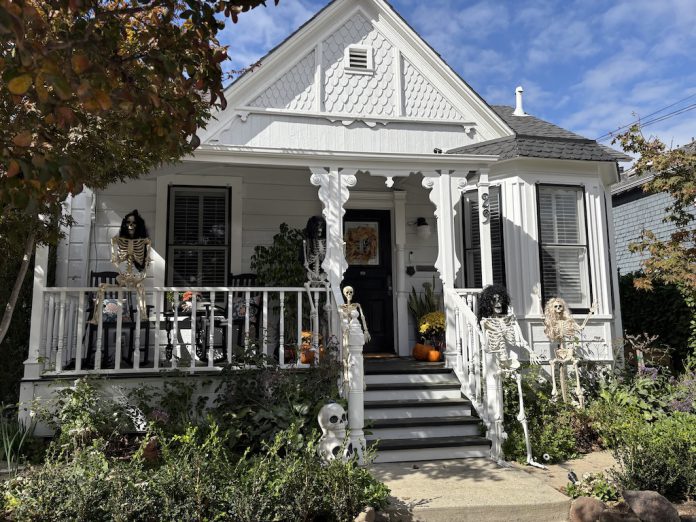
Strolling through the Almond Grove neighborhood is a real treat this time of year, when you can see carefully restored Victorian homes adorned with elaborate Halloween decorations. Yet these charming tree-lined streets once faced something even more menacing than ghosts and goblins. Progress.
During the 1960s, downtown businesses were losing customers to the popular new concept of shopping malls such as Valley Fair. Desperate merchants formed a group called “Progress, Inc.” to lobby for relief.
The Los Gatos-Saratoga Board of Realtors commissioned a study to help pave the way for change, focusing on residential neighborhoods near downtown. It concluded that “to provide continued commercial growth, the disposable income of citizens MUST increase—there is no other way under our free society.” Given that “most of the present residents are retired and live on bare subsistence incomes,” displacing them with “families who can afford many of the niceties of life” will result in “a greatly expanded market available to our local businesses.”
As a first step, the study recommended demolition of the entire square block of “older worn-out structures” bounded by Bean, Massol, Tait and Nicholson avenues and construction of two “high-rise, high-rent apartments of pleasing design.” This would “provide better streets, add substantially to the town tax base, provide a ‘shot-in-the-arm’ to our downtown area through increased purchasing power, increase property values, provide landmarks where none now exist, and bring to our town substantial and cultivated citizens.” It would be the first of many such developments throughout town. No thought was given to preserving the historic homes built by some of the Town’s earliest residents or to what might happen to families displaced under this draconian program.
In a speech before the Board of Realtors on Sept. 24,1963, Town Manager Donald McIntyre agreed, adding: “The community would benefit from an increase in real estate taxes by filling downtown areas with high-rise apartments. Residents would have fewer children, so little or no impact would be made on the educational system.”
To explore further, the Town Council voted to retain the services of a land-use consultant. Portions of the consultant’s report, combined with provisions of the federal government’s Urban Renewal program, were incorporated into a new General Plan. Under Urban Renewal, building inspectors were given unquestioned power to condemn any structure not meeting current building codes. If codes were updated annually, all buildings more than a year old would be out of compliance. Entire neighborhoods could be razed. There was no provision for appeal.
Potential future landmark properties such as the magnificent Hotel Lyndon, the ornate Town Hall, the Carnegie Library and the 1917 Baptist Church had already been bulldozed. Political insiders clamoring for modernization proposed designating the entire area between Massol Avenue and Highway 17 as an Urban Renewal zone. The stage was set for a massive transformation of Los Gatos from a town to a city.
Fortunately, this misguided vision was never realized. In 2008, the Town Council passed an ordinance creating the Almond Grove Historic District to recognize and preserve the historical, architectural and cultural significance of this once maligned—and now-treasured—neighborhood.
It’s one of five historic districts (Broadway, Fairview Plaza, University/Edelen and the Downtown Commercial District) that helped establish the character of our town.
Alan Feinberg is a local historian and founder of the LOST Gatos Project www.lostgatos.com. Since 2015, his mission has been to generate enthusiasm among Los Gatos residents for remembering and preserving our town’s unique character and historic treasures before they’re lost forever. For more Los Gatos history, download the free mobile app Discover LOST Gatos by Alan Feinberg, Peggy Conaway, and Sandy Decker and take a self-guided walking tour through our historic downtown.









